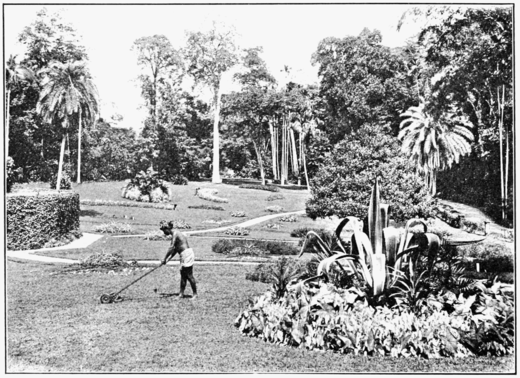
stouter than those of lower altitudes and not so tall. In these mountain highlands in addition to forest there is a certain amount of "open country," the patanas. These are expanses of grassland on hillsides and rolling ground. The monsoon forest occurs in the drier regions of the island in the northwest and southeast. Here there are no very tall trees as compared with those of the rain forest and many of them are short and scrubby—very much branched after the manner of dry country plants the world over. A considerable number are deciduous, losing their leaves in the hotter and drier months of spring to put them on again in the period of the monsoon or rain-bearing winds.
In the hot, moist lowlands of the southwest part of the island a typical strand flora may be seen. There are mangrove swamps and thickets of Nipa palm. It is in such very hot districts that rubber is grown and the cocoanut flourishes also. The drier regions have usually what would be a fair allowance of rain if in the temperate zone, but the tropical heat causes such rapid evaporation that the fifty inches of annual rainfall at Anuradhapura is not sufficient to grow crops without irrigation. Here then is a truly arid district. Farther north at Jaffna it is still drier, so that almost desert conditions prevail at least for a part of the year. As these dry regions can be visited easily at all times of year they make a very attractive feature of the island from the standpoint of the botanist. They are especially interesting to the American student familiar with the arid conditions of the west. In America all
